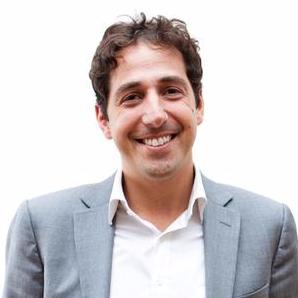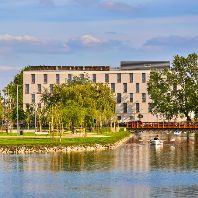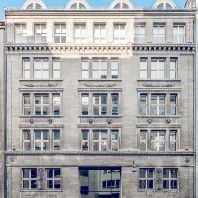Design International celebrated its 50th anniversary in November 2015. What do you consider the most significant milestones for the company?
The anniversary was one of those things where you can see it coming and then when it happens, [the reaction] it’s not expected and you receive a lot of attention; it’s like achieving a new maturity level for the group. Of course it’s very overwhelming for everyone in the company.
There are quite a number of projects that we feel very close to, that opened up a new chapter for the company. If we go in reverse order, starting with recent projects, one that made a big difference to us was Morocco Mall in Casablanca that we opened four years ago in December 2011. This project in particular underlined the ability of Design International to pioneer retail in new countries which is what made the company prosper over the past 50 years.
Another milestone project was Odysseum in Montpellier that opened in 2009, so just two years before Morocco Mall. In that particular project we had a long leisure street dedicated to the university students of Montpellier and possibly the most successful open air mall built in those days. The unique factor of the Odysseum is that there is also a tram that arrives from the city centre. The tram line is something that the mayor of Montpellier at the time wanted to realise, and the agreement with the municipality to bring the tram to get the last stop right in the heart of the shopping centre was a great achievement.
Going back in time, another milestone project I can think of was Bugis Junction in Singapore. This particular project was the first galleria, the first covered street in Asia, parallel to Galleria Vittorio Emanuele in Milan. It became very popular. The covered street with all the colonial buildings left by the British Empire and the authenticity of the area made this project very well-regarded.
Going back further, I can think of Queens Quay Terminal in Toronto that was basically a shopping centre and leisure area, with a lot of events organised to embellish and regenerate the waterfront in Toronto. The project became so popular that they wound up running approximately 450 events a year, so certain days have more than one event going on. It rejuvenated the entire waterfront of Toronto.
How has Design International’s approach developed and matured over the years?
The company has changed a lot, as you would expect. The most significant change is that we tend to design not just buildings but actual products, so it’s like the entire building becomes a reference point for the communities where they’re built. They become very recognisable. Being very specialised in retail and leisure in the old days, we put all the touches and energy into the interior design. You designed a very simple box, as you would expect a retail store to be, and the entertainment, activities, finishes and interior environment was what moved people around.
Lately, Design International has been one of the first architecture practices that flips this status quo around, so we wanted to create a stronger indoor and outdoor relationship. This led us to treat not just the image but the entire scheme of the building as a breathing creature, so much more transparent, porous. When you start using more transparent material within the architecture of the building, the building itself becomes prettier. It becomes more inviting, more engaging and communicates better indoor and outdoor spaces.
Design International has a very international, very diverse team. What do you feel are the pros and cons of having such a setup versus having a more homogenous team?
I see a lot of pros, to be frank, and very few cons. The biggest con is that you live in a constant cultural misunderstanding. People think and communicate in a completely different way. But knowing that the other person, your colleague, is actually coming from a completely different background creates that openness that you need in a creative environment like ours, to listen, so the biggest pro is that you keep listening. First you listen, second you listen, third you listen and eventually you mature an opinion and you intervene, so listening is the keyword that is stimulated by this multicultural environment. But the cons are by far diminished and almost disappear in comparison to what you get in return with the pros.
About Design International
Design International (DI) is a comprehensive, innovative retail architecture firm, working across seven integrated divisions – Architecture, Masterplanning, Interior Design, Lighting Design, Landscape Design, Branding & Signage, and Leasing. Originally founded in Toronto, Canada, in 1965, DI has grown its vast experience on a global scale with current offices in London, Milan, Shanghai, and Jakarta. The firm is internationally recognised for research studies, planning and design of mixed-use, retail and hospitality developments.















